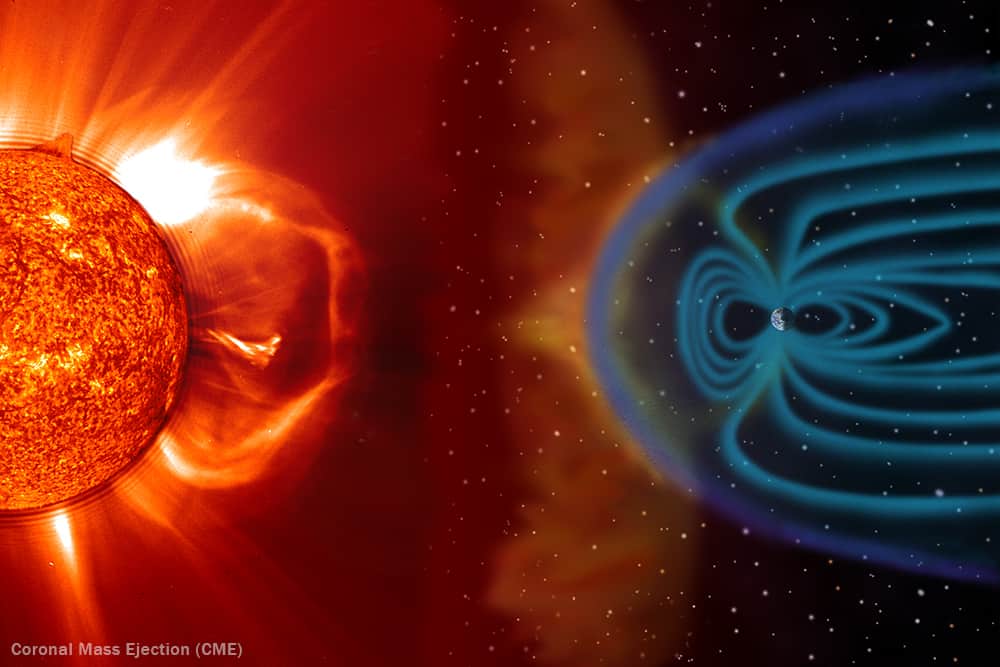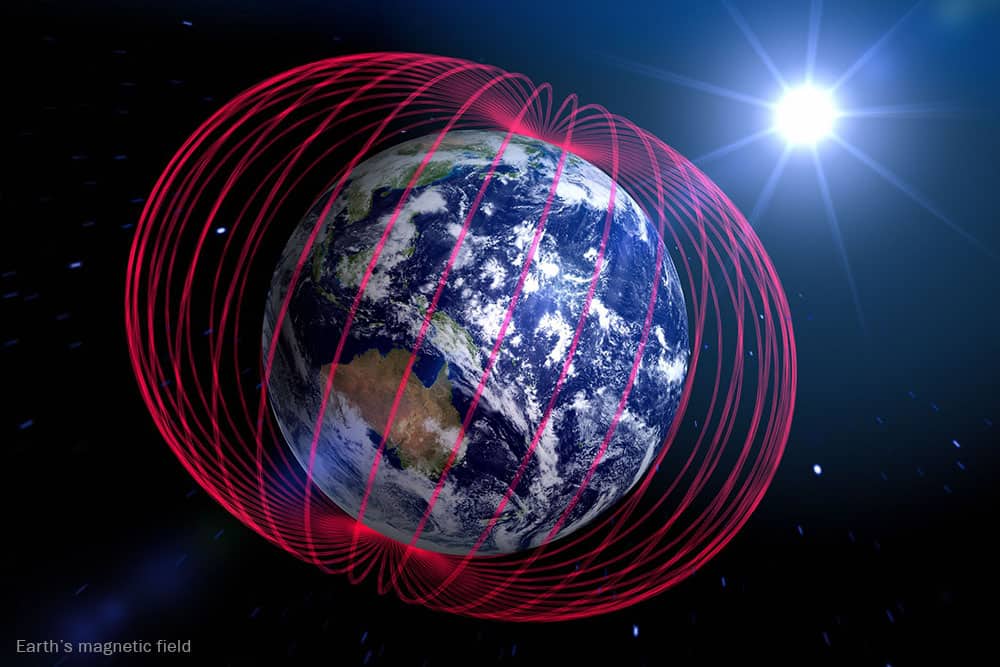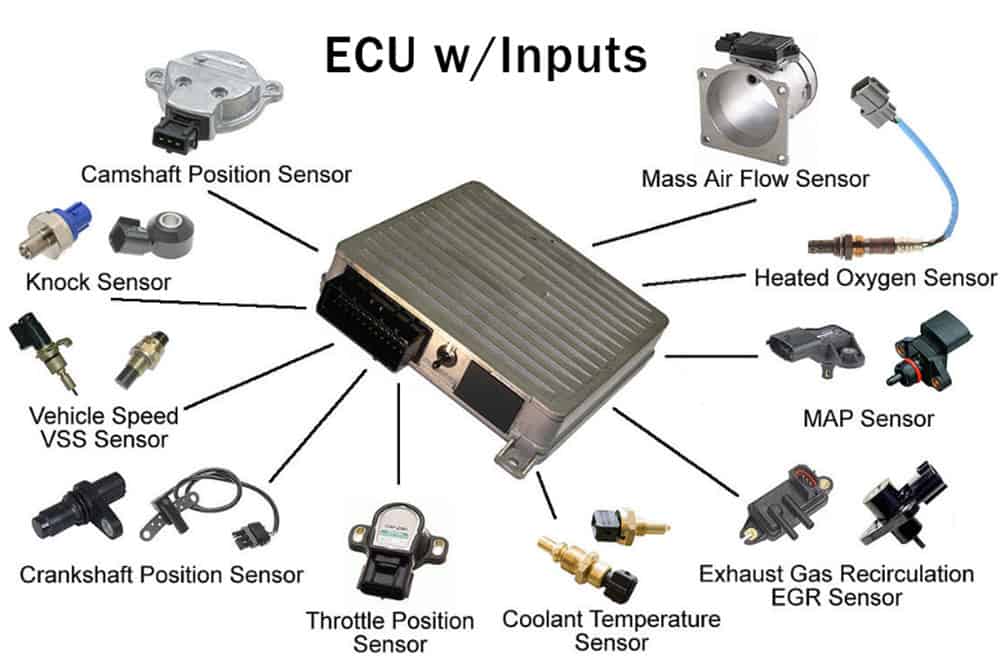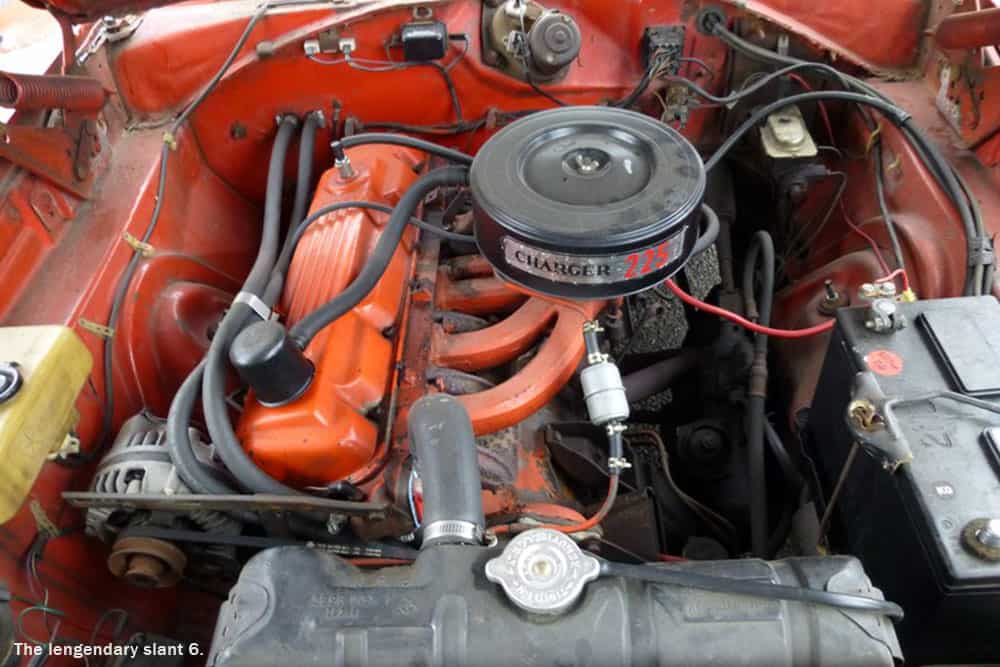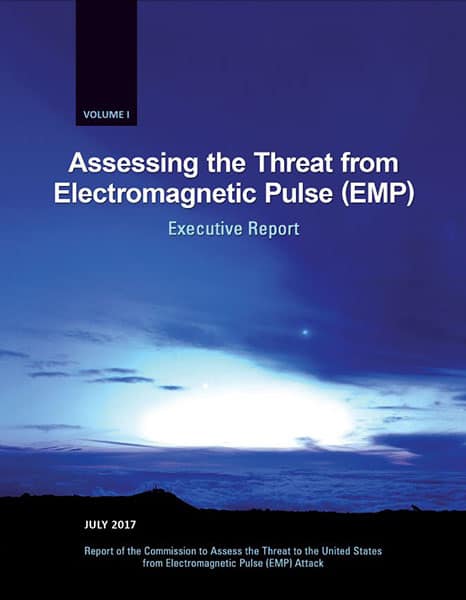We humans are pretty clever and like to think that we’re one step ahead of things most of the time. Then something like a tsunami happens, crashes over our defenses and washes entire cities off the map. Or viruses get loose and cause global chaos.
Through it all though we have our trusty electronics to stay in communication with one another and, if push comes to shove, we can always hop into the car and hightail it out of Dodge. Or can we?
Electricity: Our Achilles Heel
Electricity is what separates the world of the 21st century from that of the 19th century and all centuries prior to that. Without it there’d be no smartphones, no skyscrapers, no internet, no street lighting, no television, no cars and on and on.
But while we tend to take electricity, and the devices that depend on it, for granted the fact is all it would take is a single massive solar flare or nuclear weapon detonated at the right altitude to create an EMP (1) and render most of those devices – including our cars – useless.
But is there a way to shield a car from the effects of an EMP? Before we answer that question let’s look at what an EMP is.
What is an EMP?
EMP is short for Electromagnetic Pulse. This is a burst of intense electromagnetic energy originating from one of two sources: the sun or an atmospheric nuclear detonation. Solar-base EMPs occur when the sun releases massive amounts of plasma and accompanying magnetic energy from its corona (2) in what’s known as a CME or Coronal Mass Ejection (3).
This happens on a fairly regular basis but such CMEs are not usually powerful enough to penetrate the earth’s magnetic field, and so they pass without our being aware of them. Occasionally, however, CMEs occur that are powerful enough to breach the magnetic field and cause large-scale disruptions. The most recent example of this was in March of 1989 when a huge CME rendered the power grid in Quebec useless for several hours (4).
A nuclear weapon detonated in the atmosphere could also cause an EMP. For instance, if there were a foreign player with nuclear weapons and a death wish they could conceivably detonate one or more nukes high in the atmosphere and create an EMP that would create surges that would fry electronic devices over a large area, including the electronic components in many cars, and leave us sitting ducks for more sinister acts to follow.
Would an EMP Actually Disable My Car?
Now we get to the $64,000 question: would an Electromagnetic Pulse actually disable your car? Just about every post-apocalyptic film or TV show of the past 40 years depicts all motor vehicles grinding to a halt in the aftermath of an EMP, but would that actually happen?
The answer is… it depends. Scientists rate EMP events as either E1, E2 or E3 (5). Most EMPs fall into the E2 or E3 categories which are comparable to lightning strikes (E2) or moderate solar flares (E3).
E1 events have the potential to do the most damage. They are caused by nuclear weapons being detonated high in the atmosphere (high altitude EMPs or HEMPs). An E1 event has the ability to interfere with the flow of electricity in most devices and may send so much energy through some systems that it fries the components and renders them useless.
So, depending on where you are relative to a nuke-generated EMP and what type of vehicle you have, your car may be rendered useless, or it may stop momentarily and then quickly restart, or it may be completely unaffected.
We’ll get into it in more detail in a minute, but as a general rule the older the car the better its chances of surviving an E1 event, simply because older cars had far fewer electronic components. But the number of 40 – 50 year old cars still on the road these days is miniscule. Chances are your car, SUV or pickup was made sometime in the past 10-15 years and so would be more susceptible to a HEMP E1 event.
Other EMP Variables That Could Affect Your Car
There are a number of variables that determine to what extent your car is likely to be sidelined by an EMP. Certainly your location relative to the explosion is one, as we said. But it’s not the only one. Other variables that will impact whether your car is taken out include:
- The amount of gamma rays (6) emitted by the blast.
- Whether or not your electronics are shielded in some way.
- Whether there are any gaps in the shielding.
- The level of sophistication of the electronics.
- Whether the car is on or off at the time of the blast.
- The length of any cables attached to the various electronic devices.
- The altitude of the burst.
- Your position relative to the earth’s magnetic field (7).
The High Cost of High Technology
You might think that newer, more sophisticated cars would have some sort of EMP resistance built right into them. Unfortunately, just the opposite is true. The further we go down the electronic rabbit hole, that is, the more we integrate electronics into every aspect of a car’s functioning, the more susceptible it becomes to being undermined by something like an EMP blast.
It’s not just that many of the components in contemporary cars are electronic, it’s the kind of electronics these components rely on that make them particularly vulnerable to an E1 event. You see, most of them have computer chips built right into them, and computer chips – along with transistors (8), which are also used extensively in modern cars – are designed to operate at very low voltages that make them highly susceptible to being damaged by an EMP.
Older cars also have electronic components such as alternators and ignition coils, and these too may wind up succumbing to a powerful enough EMP. But in this case the old rule “the fewer the parts, the fewer the potential problems” is applicable. And, if you own an older car that you’re keeping around in case of an EMP event, you can always keep replacement alternators and like on hand in what’s called a Faraday cage (9) just in case you need them.
But what if you don’t want to drive a 1968 Dodge Dart? What can you do to protect your modern vehicle from being fried by a HEMP?
Components That Could Cause Trouble
The first thing to do to increase the odds that your car will survive an aerial nuclear burst is to get a car with as few vulnerable components as possible. Does that mean you should try and track down one of those 1968 Dodge Darts we mentioned above? Well, that might not be such a bad idea, but in lieu of that just look to minimize your car’s vulnerability by avoiding vehicles with electronic ignition or electronic fuel injection. (Easier said than done we know.) Anti-lock brakes are another no-no, as is the all-powerful Engine Control Module or ECM (10).
The good news is that ECMs (also referred to as ECU or Engine Control Units) did not become widespread until the mid-90s. So you don’t necessarily have to reach back into hallowed antiquity to find a vehicle that will increase your chances of being able to drive away from an E1 event.
Another benefit of having an older car as your EMP insurance is that they are much easier to repair than contemporary cars. Before advanced electronics became the norm the various components of an engine were right there for you to identify, remove, replace or otherwise work on.
If you had even a passing familiarity with internal combustion engines you could replace the carburetor or fan belt, or perform any number of other repairs with little more than a set of socket wrenches and a screwdriver. Not today (see image above).
That ability to effect repairs on an old car and keep moving could come in mighty handy when the SHTF.
Does Gas or Diesel Make a Difference?
An EMP poses no threat to people, plants or animals and it doesn’t really care what type of fuel you use to power your vehicle. So, no, it doesn’t make any difference if your car is powered by gasoline or diesel.
One thing you should consider however, is this: if a foreign power should detonate a nuclear weapon high in the atmosphere and cripple our country’s infrastructure, and by some chance your car survived the E1 event, what type of fuel is likely to be more accessible post-EMP?
If an EMP takes out the electronic systems that power all the gas pumps and you have one of the 10% of vehicles that are still in working order, you could conceivably get where you want to go by siphoning gas from the 90% of cars that aren’t working. Sure, their owner’s may not take kindly to you doing so, but you gotta do what you gotta do.
If you have a diesel powered vehicle where are you going to find fuel for it?
What About Electric Cars?
If you want to stir up a lively debate ask car nerds about this. There are those who believe that, because everything in an electric car is, well, electric that it would fry like an egg under the E1 sun.
There are also just as many who believe with all their heart and soul that because of the advanced engineering involved in creating something like a Tesla that the electronics in it are effectively shielded from any type of EMP damage. Although those same people are typically hard pressed to present hard evidence to back up their claim.
The truth is we just don’t know for sure how a sophisticated modern electric car will react to an EMP burst. But do you really want to wait until the sky is on fire to find out?
Enter the US Government
The only type of officially sanctioned scientific study on the effects of EMPs on cars was conducted by the US EMP Commission (11) some 15 or so years ago. (Who knew there was a US EMP Commission?) The commission contracted scientists to test 50 different gas powered vehicles that had been manufactured between 1987 and 2002 to see how they would stand up to an EMP.
Perhaps surprisingly they found that only 3 of the 50 vehicles shut down when they were exposed to an EMP while in operation. Of the 3, 2 were able to restart soon after shutting down. Only 1 was permanently disabled. That seems like good news in a way, and also seems to validate the opinion of those who think EMPs pose no particular threat to automobiles.
However – and it’s a big however – it must be noted that the commission did not state the make and models of any of the cars involved, nor did they indicate the age of the cars involved, other than to say the oldest was from 1987 and the newest from 2002.
So, far from proving that EMPs pose no threat to cars, the study mostly bolstered the argument that older cars stand a pretty good chance of withstanding an EMP. There were also some significant questions regarding the methodology employed and whether the scientists involved were allowed to push the EMP envelope far enough to actually replicate a real-world E1 burst.
As for any car built in the past 20 years and loaded with electronics? The study didn’t address any of them, so we just don’t know.
Therefore, if you really want to give your new car a fighting chance of emerging unscathed from an EMP attack the best thing to do would be to find some way to shield its vulnerable electronics. Below we’ll take a look at some ways you might be able to do that.
How to EMP-Proof Your Car
As we said earlier if you have one of those 1968 Dodge Darts with the lovely straight 6 motor and you have stockpiled an extra alternator, generator and ignition coil etc and stored them in a Faraday box you’re all set. The odds of your car being sidelined are slim and none.
On the other hand if your car is 3 years old and loaded with electronic gobbledygook your options narrow considerably when it comes to protecting it against an EMP. Basically, you either have to transform the whole car into a Faraday box, or transform your garage into a Faraday box.
“But what the hell is a Faraday box?” you ask. Good question. We’ll explain.
The Faraday Box
A Faraday box (also called a Faraday “cage”) is named after Michael Faraday (12), a British scientist who greatly advanced knowledge of electromagnetism and electrochemistry during the 19th century.
Faraday proved that if you built a box or cage out of metal grating, then any electrical pulse emanating from the outside the box/cage would, when it hit the cage, be distributed in a way that cancelled its impact inside the cage. The important thing is that any holes in the cage must be smaller than the wavelength of the anticipated radiation.
Cars have metal frames that form a sort of crude Faraday box. But the effect is not complete. An EMP can still travel through the large spaces or “holes” created for the windows, because those openings are larger than the wavelength of the EMP. So if you want to ensure your car’s electronics will not be fried by an EMP you have to cover those openings either with some type of fine metal grating, or you need to cover the whole car, especially the windows, in aluminum foil.
Driving around with your car like that is sure to garner lots of unwanted attention, so are there any alternatives? Sure.
- For one thing you could keep the aluminum foil covered car in storage only to be taken out in the event of an EMP strike.
- Or you could build a Faraday box in your garage and keep the spare car in there, again, only to be taken out in case of emergency.
- Or, you could turn the whole garage into a Faraday box, but that would necessitate removing all the internal electronics, like the garage door opener and lights.
- Or, you could attach a steel cable to the rear axle and let it drag on the ground as you drive. If there were an EMP burst it would hit your car and then move down through the cable into the ground, saving your delicate electronics.
The Bottom Line
An EMP may be caused by either a massive solar flare/coronal mass ejection or by a hostile nation detonating a nuclear weapon high in the atmosphere. In either case it is highly likely that much of our electronic infrastructure – along with the electronics in our cars, SUVs and trucks – would wind up getting fried.
For that reason many people are searching for a way to shield their vehicle from the effects of an EMP, but finding that their options are pretty limited.
The easiest thing to do would be to purchase a car that was made before computer chips, transistors and other vulnerable electronic components became standard features in automobiles – meaning a car at least 40 years old. But such cars are pretty rare these days and might cost a pretty penny.
The other options are not quite so straightforward. For instance, you can wrap your car in tin foil, or you can create a Faraday box/cage in your garage where you keep the getaway car, should you ever need it.
As a final option you could consider dragging a cable that’s attached to the rear axle around with you wherever they go on the chance that it would redirect an EMP burst into the ground.
A lot of people are willing to gamble that theirs is one of the cars that will escape an EMP burst unaffected. Whether you are willing to take that chance is up to you.
